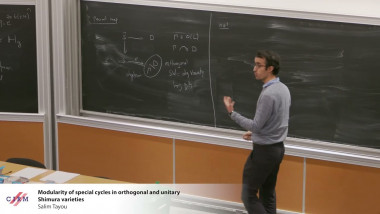
A $\lambda$-adic family of Funke-Millson cycles and a $\lambda$-adic Funke-Millson lift
By Paul Kiefer

Modularity of special cycles in orthogonal and unitary Shimura varieties
By Salim Tayou
Appears in collection : Algebraic Structures in Perturbative Quantum Field Theory: a conference in honour of Dirk Kreimer's 60th birthday
Multiple zeta values are real numbers which appeared in depth one and two in the work of L. Euler in the Eighteenth century. They first appear as a whole in the work of J. Ecalle in 1981, as infinite nested sums. A systematic study starts one decade later with M. Hoffman, D. Zagier and M. Kontsevich, with multiple polylogarithms and iterated integral representation as a main tool. After a brief historical account, I'll explain how a quasi-shuffle compatible definition (by no means unique) can be given through Connes-Kreimer's Hopf-algebraic renormalization when the nested sum diverges. I'll also give an account of the more delicate renormalization of shuffle relations. Finally, I'll introduce the Ohno-Okuda-Zudilin model of q-analogues for multiple zeta values, and describe the algebraic structure which governs it.
